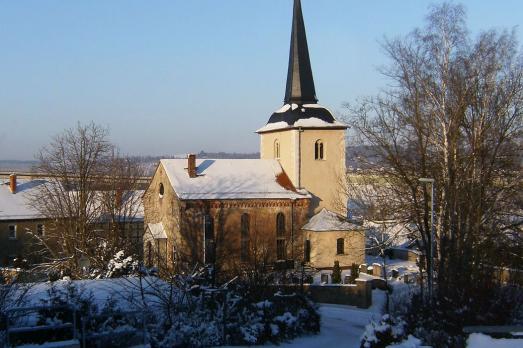Protestant church
Laren (Gld), NL
Neoclassical "Waterstaatskerk" (1835), restored 1947. Embossed, brick facade with natural stone Doric pilasters, crowned by a wooden triglyph list and pediment. Wooden hexagonal dome tower.
Here you can search for a building to visit. You can use the map find destinations, or you can use the filters to search for a building based upon what different criteria.
Laren (Gld), NL
Neoclassical "Waterstaatskerk" (1835), restored 1947. Embossed, brick facade with natural stone Doric pilasters, crowned by a wooden triglyph list and pediment. Wooden hexagonal dome tower.
Gennep, NL
Reformed church, three-sided closed hall church, 1661-1663, with open bell tower on the roof, a simply decorated gable at the front and a baroque entrance frame. In the belfry two bells made by A. Juliën from Liège, cast in 1695 with diameters respectively 63.8 and 55.4 cm. The inventory includes: pulpit, three offering blocks, chandelier, XVII. Organ with two manuals and pedal from 1950 by H. Spanjaard (Amsterdam). It replaced an organ from 1708.

Ludwigsburg, DE
The Protestant Church in Ludwigsburg was built between 1718 and 1726 by the master builder Donato Giuseppe Frisoni as a Baroque church. The interior of the hall church shows the simple aspect of the 1960 renovation.

Strasbourg, FR
This Church is one of the three religious buildings in Strasbourg bearing this name. It was founded between the 13th and 14th centuries. It became affiliated with the Lutheran Protestant community in 1524, being one of the 250 churches affiliated to the Augsburg confession. With the invasion of Louis XIV's troops, this church became a Simultaneum in 1681: the choir was dedicated to Catholic worship while the nave was reserved for the Lutherans. During the German presence between 1870 and 1918, a new Saint-Pierre Church Jeune was built in 1898, used for Catholic worship. This church therefore returned completely to Protestant worship.

Balingen, DE
The Protestant church in the town of Balingen was built as a late Gothic church as an extension of the St. Nicholas' Chapel, first mentioned in the 14th century. It is said to have been raised to the status of a parish church around 1516. In 1760, the church tower was fitted with a sundial by Philipp Matthäus Hahn, and the great city fire of 1809 also affected the interior of the church. In 1861-62, all the keystones were repainted, as well as the paintings from 1613.

Bad Hersfeld, DE
The town's Protestant church dates back to around 1060, when a Romanesque basilica was built. It was then rebuilt and extended over the next 420 years to become the Gothic church that still exists today. The interior was considerably altered by Calvinist iconoclasts and by at least two major fires.

Saintes, FR
The Protestant church, completed in 1906, replaced many pre-existing sanctuaries. A first temple was built at the beginning of the 17th century, outside the former walls of Saintes. Inaugurated in 1602, it was destroyed in 1685 after the publication of the Edict of Fontainebleau. The existence of a third temple is attested in 1802, the latter being used for worship until the beginning of the 20th century. The construction of the present building was entrusted to the Parisian architect Augustin Rey, whose project combines neo-Romanesque and neo-Byzantine influences.

Gera, DE
The Protestant church in the village of Thieschitz was built in 1851 on the remains of a previous church. In 1867 the nave was enlarged and raised, the apse was modified, the sacristy and the vestibule were added. The upper part of the tower has a pointed spire above the dome. The lower part of the tower of the predecessor church has been preserved.
Benschop, NL
2018 The front facade now says "Protestant Church" instead of "Geref. Kerk". The Reformed Church in Benschop is PKN, but of Reformed Bond signature. So the Reformed Bond people go to church in the historical Reformed Church, not in this Reformed Church.

Oss, NL
On April 2, 1966, the church building was inaugurated as a new Reformed Church. The church replaced the older church in the centre of Oss, which was demolished after the move. Around 1978 the old church of the Reformed congregation on the Burgemeester Van den Elzenlaan in Oss had become too small and people started using the building of the Reformed congregation. A few years later, in 1980, a second church building was built behind the existing Reformed church building for the Reformed congregation. A few years later, only joint church services were held. In 1989 the Reformed Church and the Reformed Church federated. In addition, the church building was given the name Paaskerk and the annex has since been called Pentecost mound. In the years that followed, a new entrance and entrance hall were built that connected the two buildings. The non-oriented church building is a modern church in the style of post-war modernism. It has an eight-sided ground plan from which a quarter has been cut. In the centre is a tower of metal columns with a belfry. Inside, the building consists of two rooms next to the entrance, with the second room being used for smaller services.

new
Nestled amidst the serene landscapes of the Harz region, lies a hidden gem for nature enthusiasts and history buffs alike - the Harz Monastery Hiking Trail. Lace up your hiking boots and embark on this captivating adventure that will transport you back in time.

The Holy Mile (Miglio Sacro) of Naples is a one-mile-long itinerary, through sacred places linked to the city's patron saint, San Gennaro, in the Rione Sanità district. Discover the city from a new perspective with this unique walking tour.

As a university city, cultural offerings abound in Tartu and will reach their peak after being designated one of three European Capitals of Culture for 2024. In this list, we've compiled the most interesting sacred places to visit in and around the old town.